Strawberry Alexandria: cultivation and variety reviews
Alexandria strawberries are prized not for the size of the berries, but for their taste and aroma. Its fruits ripen in the garden for several months in a row.
Content:
- Description, benefits and reviews of the variety
- Strawberry propagation Alexandria
- Growing seedlings
- Planting seedlings in the ground
- How to care for strawberries?
Description, benefits and reviews of the variety
Repairing strawberry Alexandria of Swiss selection. The variety was created in the 60s of the last century. Strawberries with a long fruiting period are called remontant. This can be the re-formation of berries or periodic, when the peduncles do not appear all at once, but gradually. The advantage of this type of varieties is the ability to feast on berries for a long time.
All strawberry varieties can be divided into two groups according to the size of the berries:
- Large-fruited
- Small-fruited
By the presence of mustaches, which are used for propagation of strawberries:
- Beardless
- With a mustache
Alexandria belongs to the beardless small-fruited. The bush is relatively high, up to 25 cm. The leaves are serrated, folded along the central vein. The plant does not form a mustache. The bush is dense, the peduncles are thin. Petals are white, small, rounded. Strawberry Alexandria bears fruit from late spring to late autumn. The beginning of fruiting, depending on climatic conditions, occurs in May or June. The bush is fruitful, about 4 hundred berries can be harvested from it per season. They ripen not constantly, but in waves. There are times when only a few berries can be picked in a day.
Fruits are red, small, glossy.
The average weight of one is about 4-8 g. They are oblong, differing from other varieties in a conical shape. Berries without a neck, pointed towards the top. The seeds are large, red. Gardeners who grow Alexandria strawberries testify that its fruits are tasty, although not the most fragrant. The variety is frost-resistant, its leaves are not afraid of a drop in temperature. The petals do not disappear under the influence of frost, and the middle darkens. Fruits on such flowers are not tied.
Gardeners say that Alexandria strawberries are not damaged by any of the diseases. During heavy rains, fruits that have fallen to the ground may rot. But neither gray rot, nor white and brown spotting are afraid of them. The Alexandria variety is well suited for growing on a balcony, hanging and combined flower beds, and even on a windowsill. It does not thicken with numerous rosettes with rosettes at the end of the shoot.
Strawberry propagation Alexandria
Strawberry variety Alexandria reproduces:
The first time the seeds are purchased at a flower shop. Seeds are sown in autumn, after harvest, in the second half of winter or in spring.
How to sow seeds for seedlings correctly:
- First you need them stratify... The seeds are very small, and there are few of them in a bag. Therefore, it is difficult to distribute them evenly over the soil surface. Experienced gardeners advise spreading the seeds on a thin white cloth dampened with water using a toothpick. Then roll it up and put it in the refrigerator for 2 weeks. They do not allow drying out, so you can put them in a plastic bag without tying them tightly so that air can flow to them.
- During this time, a loose nutrient soil is prepared.Mix 3 parts of leaf humus and garden soil. Add 0.5 parts wood ash and some of the sand. Crushed, calcined in the oven, frozen or disinfected with a warm solution of Fundazole.
- Prepare dishes with a large number of drainage holes. A drainage layer is laid on the bottom. Then take out the napkin with seeds from the refrigerator, put it on the surface of the prepared dishes, water it. You can use a toothpick to pierce the napkin where the seeds are. They hide them under paper, but do not immerse them deep in the ground. Cover with glass so that moisture does not evaporate from the surface of the napkin longer.
You can first plant the seeds for seedlings by spreading them on a napkin or on the snow. Then set the dishes with them in the refrigerator or cellar. The snow melts, moisture sinks into the soil, while the seeds penetrate with it to a shallow depth. After 2 weeks, they are taken out to a warm place. Maintain the room temperature at about 20 ° C. This method is more convenient because the seeds will remain in place and will not move during stratification. But it requires more space in the refrigerator.
Many gardeners grow strawberries without stratification, sowing seeds in the soil before winter. Sprinkle lightly with soil or level with a light rake. Such seeds are stratified under a layer of snow in winter. The worst germinating seeds of the strawberry Alexandria, sown in the ground in spring without stratification. It is difficult to maintain soil moisture for long periods of time. Seeds germinate at intervals of about a month.
Growing seedlings
Due to the fact that the seeds are spread evenly over the territory of the tray or pot, no special thickening is observed. Strawberry sprouts are thin, they require a lot of light. If the seeds are sown early, in February or March, the seedlings need to be illuminated. phytolamp.
Sprinkle the soil at the level of the cotyledon leaves. If the bush has enough moisture and light, its leaves are horizontal. The vertical arrangement of the leaves indicates insufficient lighting.
Seedlings are watered regularly, but not much, she does not like high soil moisture.
If seedlings are grown in peat tablets, water it, moistening the pan. A small damp spot should appear on the surface. If the seedlings are poured, they can get black leg disease.
When the seedling has about 4 true leaves, they dive into planting in the ground. Feeding is carried out with humus, fertilizer Gumi-20M, which contains the macro- and microelements necessary for the plant and Fitosporin. The advantage of such seedlings will be the absence of ticks, nematodes and pathogenic viruses. In May, the seedlings are taken outside for hardening.
Planting seedlings in the ground
Most often, strawberries are grown in long beds 110 cm wide.It is better if this is a site after the bulbous ones. You can not plant strawberries after strawberry... The soil there is infected with pests (beetle larvae, nematode). They return to their previous site after 4 years.
How to plant seedlings correctly:
- The seedlings are placed in 2 rows. Prepare holes with a depth and diameter of 25 cm. The distance between plants in a row is 30 cm, between rows is 50 cm. Water the holes with water, set seedling bushes in them.
- If the root system is open, the roots are leveled in different directions. The apical growth point should be slightly above the soil level. If you sprinkle it with earth, the plant will not develop.
- Compact the soil around the bush and immediately mulch near-trunk circle. Straw works well for mature shrubs. Indeed, the very name of the strawberry means "straw berry". But for delicate young leaves, this mulch is not suitable. Therefore, you can use peat or rotted sawdust.
Mulching with lutrasil and other non-woven materials has become popular. At the same time, holes are cut in the canvas and young bushes are planted in them. The edges of the film are fixed with special clothespins, protecting them from gusts of wind.Organic mulch protects the soil well from overheating, but soon decomposes and needs to be replenished. Inorganic is more durable, but its use requires considerable effort. It does not improve the composition of the soil.
How to care for strawberries?
Post-plant care depends on mulch availability. If not, the soil between the bushes and in the row is often loosened. This contributes to the saturation of the soil with air. Remove weeds that can drown out young plants. If no seeds appear on them, they can be placed in the aisles as mulch. The mulched area is not loosened. Water at first more often, at least twice a week. When young leaves begin to grow, the frequency of watering is reduced.
In plants planted in May, a month later, flower stalks with the first buds begin to appear. Gardeners advise to pick them off to give an opportunity strawberries get stronger. The following flowers are left to taste the berries. Bushes sown outdoors in spring usually bloom the following year. Getting ready for winter is easy. Old leaves are cut off, young plantings are covered with fallen leaves of trees (linden, maple). After 3 or 4 years, the bushes are planted. Dig them out of the ground, divide them into parts so that each of them has buds and roots. They are planted in the same way as young plants.
The main thing is to grow at least a few bushes, from which you can then collect seeds.
After a few years, you can try to collect seeds at home. Gardeners say that this is easy to do. It is enough to collect a handful of berries, put them in a bowl and chop them. Then pour in water and stir thoroughly. Allow to settle. The remnants of the pulp float up, and the seeds sink to the bottom. Pour water with pulp, dry the seeds. They need to be sown no later than next spring. Gardeners say that Alexandria strawberries are often self-seeding. Young bushes are planted in a new area.
More information can be found in the video:



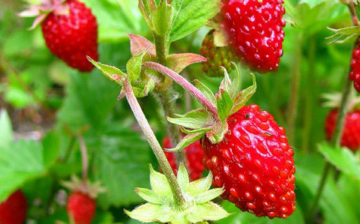
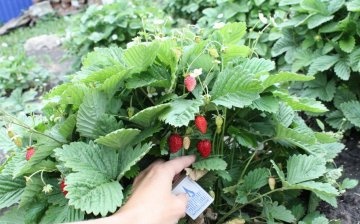
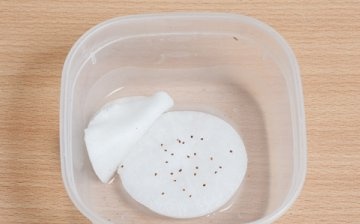
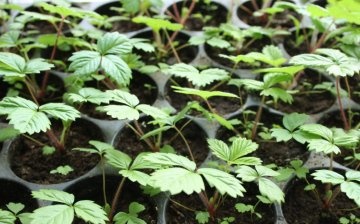

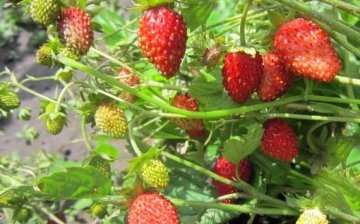






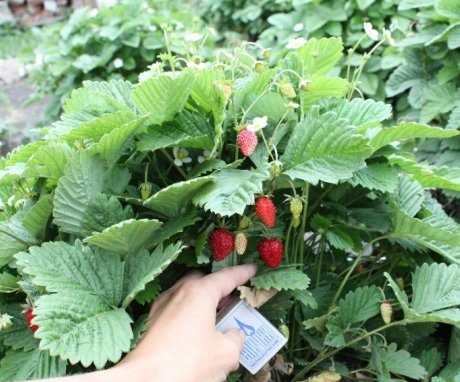
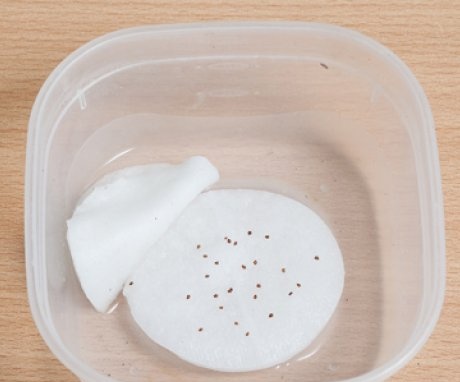
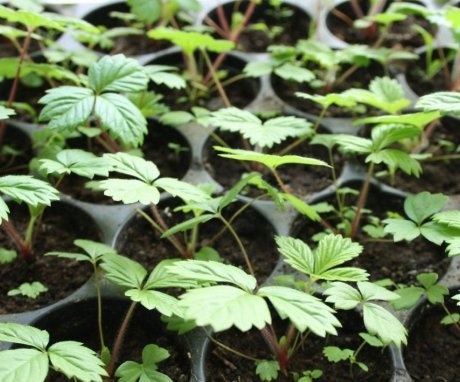
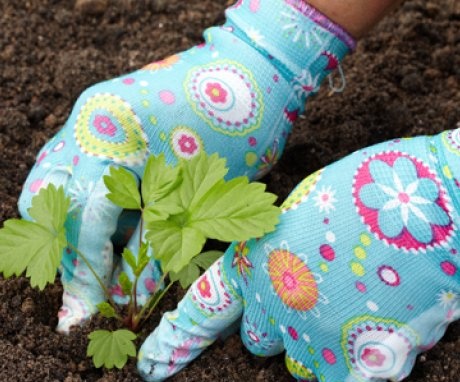
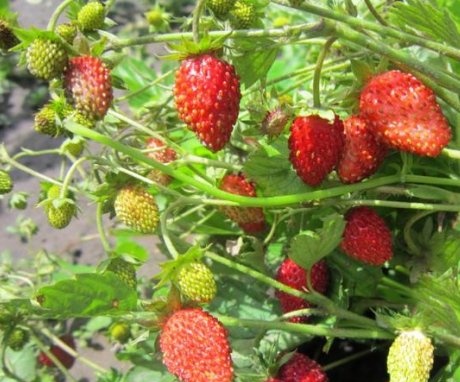
Very good strawberries and they grow not in our garden, but right in the field near the cherry orchard. We collect berries for two or three months. Very tasty, sweet and with an amazing aroma of strawberries.
Can you please tell me, this variety in my garden last year gave fruit normally, but they were all a little rotten and crooked. As if someone ate these berries, or maybe this is some kind of disease? In other words, there was a harvest, but this harvest is all embossed, terrible and eaten up.